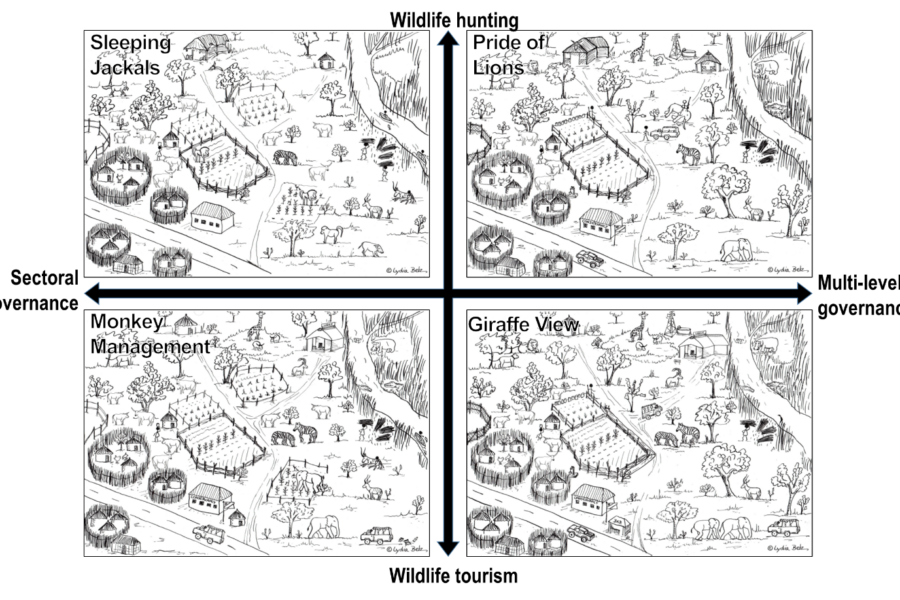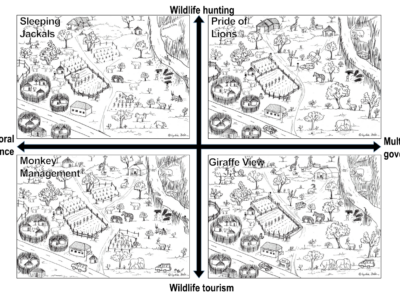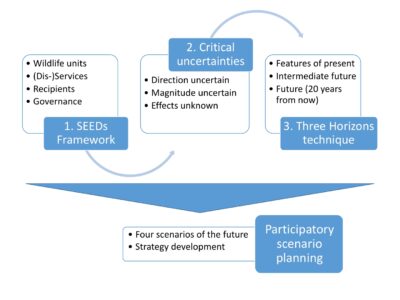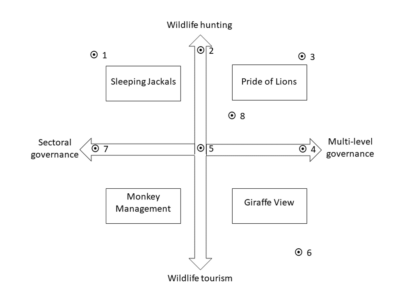Our study integrated 3 approaches—the SEEDS framework, the notion of critical uncertainties, and the three-horizons technique—to provide a generally usable template for conducting scenario planning in the context of human-wildlife coexistence. We demonstrated the utility of this template via a case study in the Zambezi region, Namibia. By engaging with stakeholders at multiple governance levels, we identified critical uncertainties and produced four scenarios on the future of human-wildlife coexistence in the study area. In addition, the application of the three horizons showed that stakeholders differ in their preferred scenarios. However, strategies to move toward a better future were widely agreed among stakeholders. For example, increasing community awareness, ensuring stakeholders’ participation in decision-making, improving cross-sector and cross-boundary stakeholders coordination, and balancing conservation and livelihood improvements were among the commonly identified strategies. Finally, the template we provided could be applied in the context of human-wildlife in other areas—but specific methodological steps need to be adjusted according to the study area.
Provides a generally usable template for how to conduct scenario planning to improve human–wildlife coexistence which can be used as a starting point.
The scenarios were made in: 2019
The scenarios look out to: 2039



